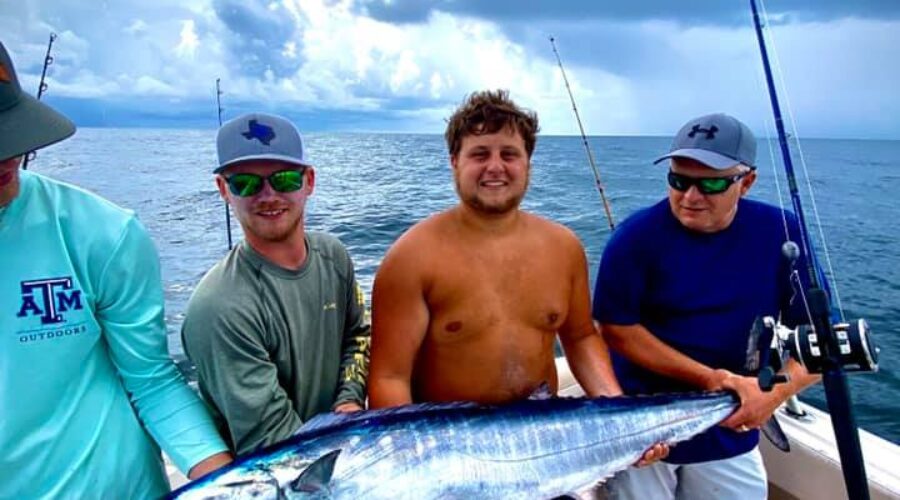Wahoo Fishing in Pensacola, Florida
Why is Wahoo fishing in Pensacola, Florida, distinct from other areas? While there are typical factors such as the presence of bait, wind direction, and current, the biological habits of the fish—how they move, feed, and reproduce—also play a significant role.
Wahoo (Acanthocybium solandri) can be found offshore in Pensacola, making it a popular destination for anglers. These pelagic fish thrive in deep, blue waters ranging from 60 to over 1,600 feet. Many local fishermen have experienced the thrill of hooking a wahoo while kingfishing in these depths. You can find Wahoo near the continental shelf, around oil rigs, floating debris, and even at FADs (Fish Aggregating Devices) situated off the Pensacola coast.
“Wahoo, they love structure, so that’s where we start looking,” explains Capt Miller, a local expert. However, I’ve caught them in open water if there’s a bait ball around. They’ll always be where the bait is because they need to eat.”
What Do They Eat?
Wahoos primarily consume fish, with tunas, bonito, flying fish, herring, and pilchards making up about 90% of their diet, while squid accounts for the remaining 10%. Thanks to their streamlined, torpedo-shaped bodies and V-shaped tails, wahoos can swim at remarkable speeds of over 46 mph, making them effective predators.
This speed is why many anglers in Pensacola employ high-speed trolling techniques at speeds between 10 and 18 knots. Fishermen often use high-speed lures such as lipped diving plugs or Ilander-style skirts, especially during low-light conditions in the early morning or late evening. Sending a planer down with an Ilander or sea witch, paired with a fresh Bonita strip, can also entice Wahoo to bite.
How Big Do They Get?
With the current IGFA all-tackle record at 184 pounds, Wahoo can grow exceptionally large, caught off Cabo San Lucas in Mexico. While Florida’s state record is 139.56 pounds, caught off Marathon in the Keys, Pensacola also boasts its share of impressive catches. On average, wahoos live for around two years, but they can reach a maximum age of about nine years, with some individuals living up to ten.
In general, wahoos exhibit rapid growth in their first two years, averaging about 1 to 1.5 inches in length per month during the summer. For instance, a wahoo tagged off Bermuda was reported to gain 22 pounds in just ten months!
They reach sexual maturity within their first year, and spawning is believed to occur year-round but peaks from June to August. During this peak, females can spawn every 2 to 6 days. Wahoo practice broadcast spawning, simultaneously releasing sperm and eggs to increase fertilization chances. A single female can produce around 26,000 eggs for every pound of body weight, resulting in several million eggs annually.
By their first birthday, male Wahoo can grow to about 34 inches, while females can reach approximately 40 inches. If you catch a 24-inch “woohoo,” consider it too small for your trophy board—snap a photo, release it, and allow it to grow.
How’s the Wahoo Population Doing?
Comprehensive population assessments for Atlantic wahoo have yet to be conducted, leaving questions about whether the population is threatened by overfishing.
Local efforts are underway to understand this fishery better. Tagging studies, supported by initiatives like the Beyond Our Shores Foundation Dolphinfish Research Program, aim to measure the growth rates and migration patterns of wahoos in the Pensacola area and beyond.



